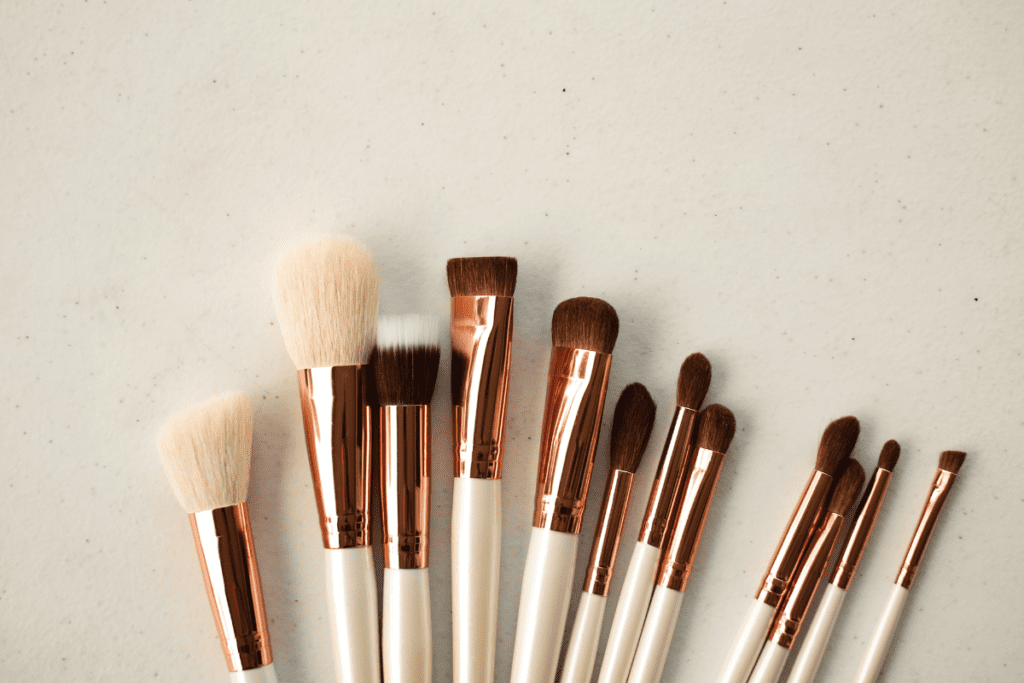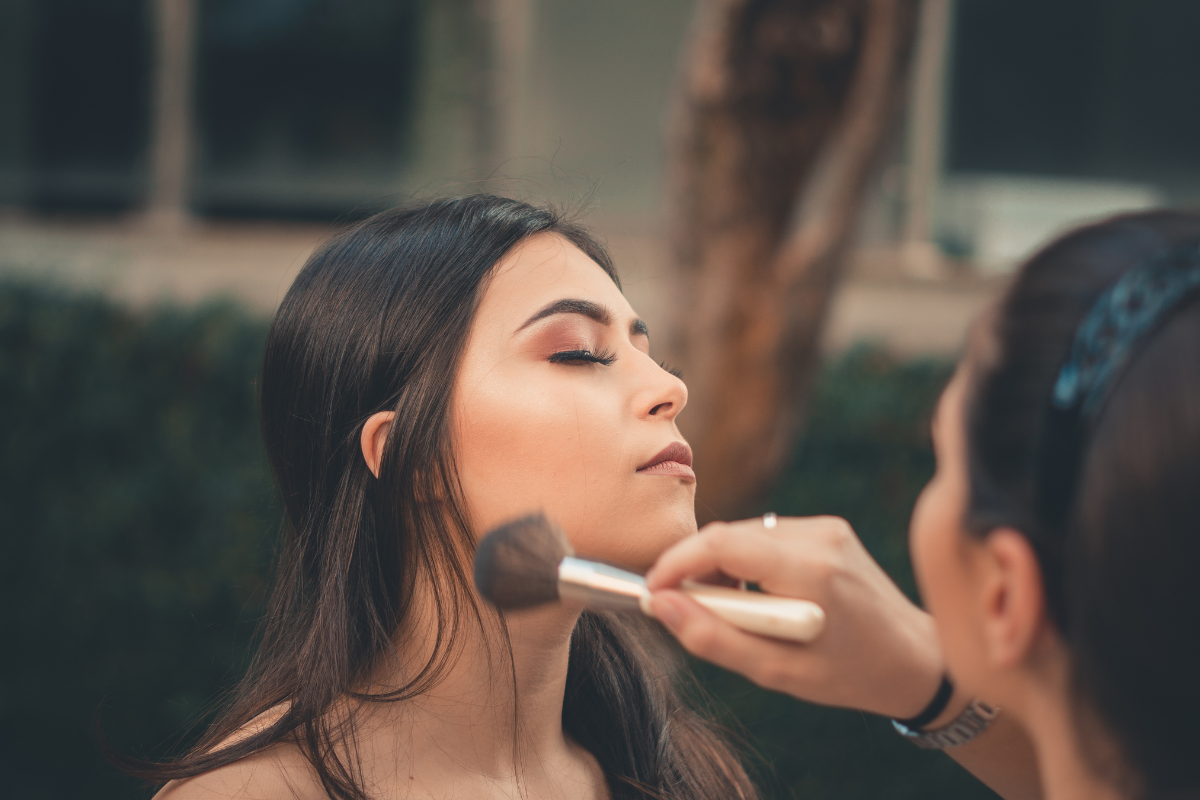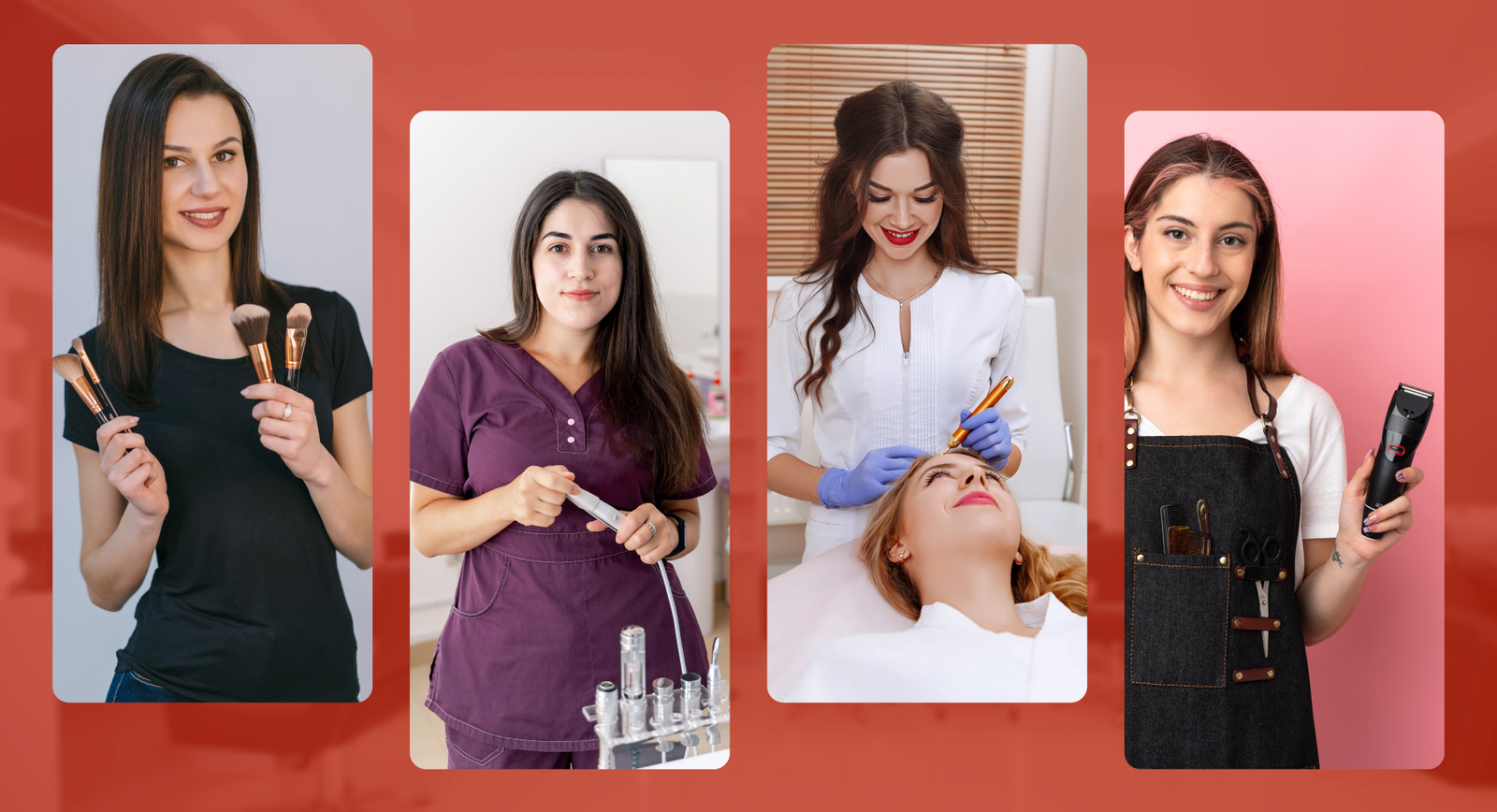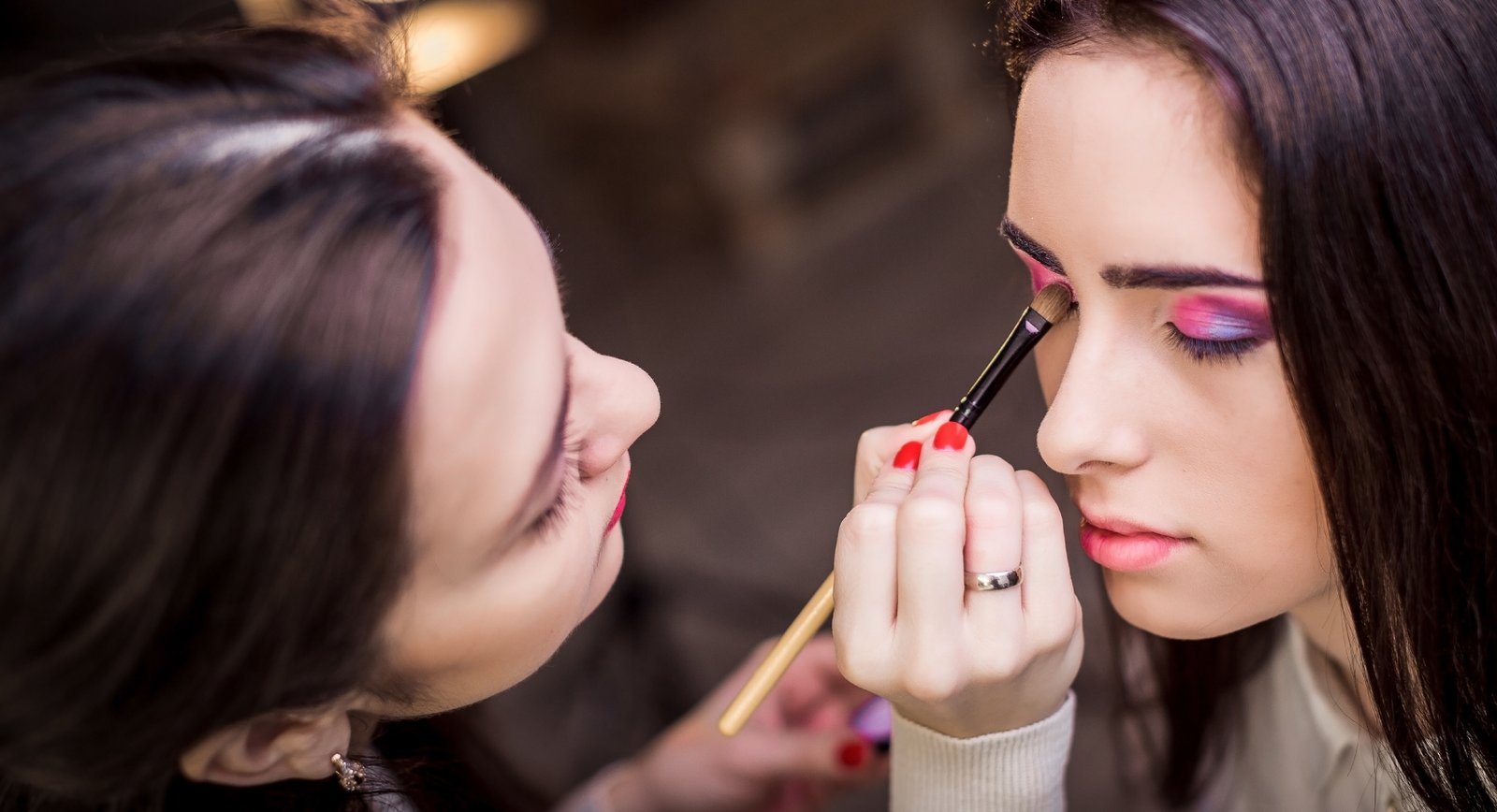Makeup brushes are an important part of every beauty routine. While you can apply makeup with your hands, using brushes gives a better finish, even blending, and keeps things hygienic.
If you are new to makeup brushes, the many types can feel confusing. But don’t worry! This Makeup brushes guide will help you understand which brushes to use, how to use them, and how to take care of them for a perfect makeup look.
Why Are Makeup Brushes Important?
Makeup brushes help in:
- Even application – Products spread smoothly.
- Better blending – No harsh lines, just a natural look.
- More hygiene – Avoids direct contact with hands and keeps skin safe.
- Precision – You can control how much product is applied.
Using the right brush can change your entire makeup game and make your look more professional!
Different Types of Makeup Brushes & Their Uses

Each brush has its own purpose. Let’s go through them one by one.
1. Face Brushes
Face brushes are used for applying foundation, powder, blush, bronzer, and highlighter.
Foundation Brush
- Flat foundation brushes are good for applying liquid foundation evenly. Buffing brushes are best for blending foundation smoothly into the skin.
Concealer Brush
- Small and tapered, this brush helps apply concealer under the eyes and on blemishes. A flat brush applies more product, while a fluffy brush blends it naturally.
Powder Brush
- A big fluffy brush is used for applying loose or compact powder evenly. It Helps avoid a cakey look.
Blush Brush
- Slightly rounded and soft, it blends blush smoothly on your cheeks. Always apply in light sweeping motions for a natural finish.
Contour Brush
- Angled brush for defining your face shape. Used to apply bronzer on cheekbones, jawline, and nose.
Highlighter Brush
- A fan-shaped or small tapered brush to apply highlighter. Fan brushes give a soft glow, and tapered brushes give a sharp, defined look.
2. Eye Brushes
Eye brushes help in applying and blending eyeshadow, eyeliner, and defining eyebrows.
Eyeshadow Brush
- Flat brushes are used to place eyeshadow on the eyelid. Fluffy blending brushes help in smoothly mixing colors.
Blending Brush
- Soft, fluffy bristles blend eyeshadow smoothly without harsh lines.
Angled Eyeshadow Brush
- Used for applying shadow to the outer corner of the eyes for a dramatic effect.
Crease Brush
- Dome-shaped brush that applies eyeshadow in the crease to add depth.
Smudging Brush
- It Helps soften eyeliner or eyeshadow for a smoky effect.
Eyeliner Brush
- A thin, precise brush for applying gel or liquid eyeliner. Available in angled or fine-tip designs.
Eyebrow Brush
- A spoolie is used for blending eyebrow product. Angled brush applies eyebrow pomade or powder for a defined look.
3. Lip Brush
It Helps apply lipstick or gloss neatly. Useful for applying dark colors with precision.
How to Use Each Brush Correctly?
Here’s how to use different brushes for best results:
- Foundation Brush – Apply foundation in small dots, then blend using circular motions.
- Concealer Brush – Dab concealer under the eyes or on blemishes and blend lightly.
- Powder Brush – Pick up powder, tap off excess, and dust it gently over your face.
- Blush & Contour Brush – Use sweeping motions to blend blush and contour smoothly.
- Eyeshadow Brushes – Flat brush for base color, blending brush for smooth transitions, and angled brush for eyeliner or brows.
- Lip Brush – Outline lips first, then fill in color for a neat finish.
Steps to Hold a Makeup Brush the Right Way
Holding the brush correctly affects how well your makeup is applied.
- Hold the brush from the end for a soft, blended look.
- Hold it near the bristles for more control and precision.
- Always use gentle strokes to avoid harsh lines.
How to Clean & Maintain Your Makeup Brushes?
Dirty brushes can cause skin problems like acne and reduce the quality of your makeup application. Cleaning them regularly is a must!
Tips to Clean Brushes Properly:
Use a mild shampoo or brush cleaner with warm water.
Gently swirl the brush in soapy water and rinse.
Reshape bristles and let them dry flat or upside down to maintain shape.
Use quick-dry brush cleaning sprays for in-between cleans.
What Happens if You Don’t Clean Brushes?
- Bacteria build-up → Skin infections & breakouts
- Brushes lose softness → Makeup won’t blend properly
- Makeup applies unevenly → Streaky, patchy finish
Common Mistakes to Avoid
Even with the best brushes, some mistakes can ruin your makeup look. Avoid these:
- Using the wrong brush – Powder brush for liquid foundation? Big mistake!
- Not blending properly – Harsh lines make makeup look unnatural.
- Applying too much product – Start with a little and build up.
- Not cleaning brushes – Dirty brushes cause skin problems.
- Using too much pressure – Gentle strokes give the best results.
Why Choose IBI International for Makeup Courses?
At IBI International, we provide:
✔️ Expert faculty & hands-on training
✔️ Latest makeup tools & techniques
✔️ Internationally recognized certification
✔️ Job placement assistance
Join IBI International and become a professional makeup artist with expert training. 📞 Call +91 81416 66789 today!
Conclusion:
With practice and the right tools, using makeup brushes becomes easy. Invest in good-quality brushes, take care of them, and apply makeup with confidence.
Want to learn more? Join a professional makeup course at IBI International and take your skills to the next level!
📞 Contact us at +91 81416 66789 to enroll today!


